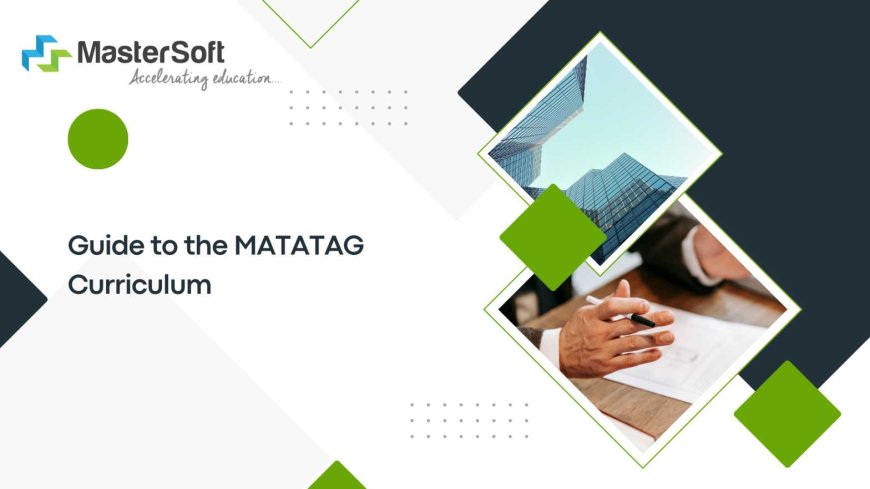Understanding the MATATAG Curriculum: A New Path for Philippine Education
One of the most significant developments is the MATATAG Curriculum, a new educational framework designed to streamline learning, reduce academic pressure, and equip students with essential life skills.

In recent years, the Department of Education (DepEd) in the Philippines has introduced reforms aimed at enhancing the quality of education and addressing long-standing challenges within the K-12 system. One of the most significant developments is the MATATAG Curriculum, a new educational framework designed to streamline learning, reduce academic pressure, and equip students with essential life skills.
This article takes an in-depth look at the MATATAG Curriculum, exploring its purpose, core features, and how it is reshaping the future of education in the Philippines.
1. What is the MATATAG Curriculum?
The MATATAG Curriculum is a reform introduced by the Philippine DepEd to create a more balanced, learner-friendly education system. The word “MATATAG” itself is a Filipino term meaning strong, stable, and resilient—an apt description of the curriculum’s objectives.
The reform was crafted in response to the educational needs of students, educators, and stakeholders across the Philippines. It focuses on enhancing critical thinking, problem-solving, and life skills while ensuring that students can manage the academic workload more effectively. The curriculum also places a strong emphasis on Filipino values and cultural awareness, alongside digital literacy, to better prepare students for the demands of modern society.
2. Why Was the MATATAG Curriculum Introduced?
Before the MATATAG Curriculum, many educators, parents, and students raised concerns about the existing K-12 system in the Philippines. The curriculum was deemed overloaded, with students and teachers feeling overwhelmed by the breadth of subjects and content to be covered. This resulted in gaps in learning, where students struggled to retain essential knowledge and skills.
The MATATAG Curriculum was developed to address these challenges by simplifying the learning process, focusing on quality over quantity, and preparing students for both higher education and the real world. The DepEd's goal with this reform is to ensure that students are equipped with the necessary competencies to thrive in today’s rapidly changing environment, without feeling overburdened by excessive academic requirements.
3. Key Components of the MATATAG Curriculum
The MATATAG Curriculum introduces several improvements to the Philippine education system, making learning more accessible and manageable. Some of its key components include:
-
Simplified Learning Content: The curriculum streamlines subject matter to focus on essential topics, reducing the amount of content students need to absorb while ensuring that they grasp core concepts. This allows for a deeper understanding of key lessons.
-
Life Skills Integration: One of the standout features of the MATATAG Curriculum is its focus on developing life skills, such as critical thinking, financial literacy, communication, and teamwork. These are embedded in the curriculum to ensure students are well-prepared for real-world challenges.
-
Cultural Relevance: Filipino culture and values are integrated across all levels of the curriculum, helping students develop a strong sense of national identity and pride while also cultivating global citizenship.
-
Digital Literacy: Recognizing the growing role of technology in education and the workforce, the curriculum includes lessons in digital literacy. Students are taught how to responsibly and effectively use technology, preparing them for a tech-driven future.
4. Curriculum Implementation Across Levels
The MATATAG Curriculum spans the entire K-12 education system in the Philippines, ensuring that students of all ages benefit from the improvements.
-
Kindergarten: Early learners engage in play-based, age-appropriate learning activities that foster cognitive, social, and emotional development.
-
Elementary School: At the elementary level, students focus on foundational subjects like math, science, and Filipino, but with a stronger emphasis on life skills, simplified content, and practical application.
-
Junior High School: In grades 7 to 10, the curriculum deepens students’ understanding of core subjects while allowing them to explore elective courses that align with their interests. There’s a greater focus on critical thinking, communication, and problem-solving.
-
Senior High School: Grades 11 and 12 offer students the choice of academic or technical-vocational tracks. This provides learners with specialized training in areas that prepare them for either college or career pathways, ensuring that education remains relevant to individual goals.
5. Benefits for Students in the Philippines
The MATATAG Curriculum offers several benefits that address the key pain points of the previous education system in the Philippines:
-
Less Academic Stress: By simplifying content, students experience reduced academic pressure. This allows for more in-depth learning without being overwhelmed by an excessive workload.
-
Skills for Life: The integration of life skills, such as problem-solving, financial literacy, and collaboration, ensures that students gain practical competencies that are essential in real-world situations.
-
Cultural Awareness: The curriculum enhances students’ understanding and appreciation of Filipino culture and values, strengthening their sense of identity while fostering global awareness.
-
Preparedness for a Digital World: With a focus on digital literacy, students are better prepared to navigate the technology-driven landscape that is increasingly shaping education, work, and everyday life.
6. Support for Teachers in the Philippines
The success of the MATATAG Curriculum hinges on the readiness and support of teachers. To aid in its effective implementation, the DepEd is providing several forms of assistance:
-
Professional Development: Teachers undergo training programs to familiarize themselves with the new curriculum and modern teaching methods. This professional development is critical to ensuring educators can deliver lessons effectively.
-
Updated Resources: Schools are provided with updated textbooks, digital tools, and other learning materials that align with the MATATAG Curriculum. These resources help teachers engage students and provide a richer learning experience.
7. Challenges and Considerations
Like any major educational reform, the implementation of the MATATAG Curriculum faces challenges:
-
Resource Gaps: Schools in rural and underserved areas may struggle with limited access to the technology and resources necessary to implement the curriculum fully. Addressing this gap is essential for ensuring that all students benefit equally.
-
Teacher Adaptation: Transitioning to the new curriculum can be challenging for some teachers, especially those accustomed to the previous system. Ongoing support and training are critical for a smooth transition.
-
Infrastructure Limitations: Many schools across the Philippines may lack the infrastructure needed to support digital learning, making it difficult to fully implement the technology-related aspects of the curriculum.
8. The Future of Philippine Education with the MATATAG Curriculum
The MATATAG Curriculum is a forward-looking initiative that aims to prepare Filipino students for the future by equipping them with relevant knowledge, practical skills, and cultural awareness. By streamlining content and promoting critical competencies, the curriculum fosters a more balanced and holistic education system that aligns with both national and global standards.
As the curriculum continues to be rolled out, the Philippines is expected to see improvements in student learning outcomes, with a stronger focus on producing graduates who are ready for the challenges and opportunities of the modern world.
9. Conclusion
The MATATAG Curriculum marks a new chapter in Philippine education, addressing the shortcomings of the previous system while providing students with the tools they need to succeed. Through a more focused approach to learning, greater emphasis on life skills, and the integration of technology, the curriculum promises to make education in the Philippines more accessible, relevant, and effective.
As the country continues to implement this reform, the MATATAG Curriculum is set to transform the educational landscape, ensuring that Filipino learners are better equipped to thrive in the 21st century.
What's Your Reaction?
























